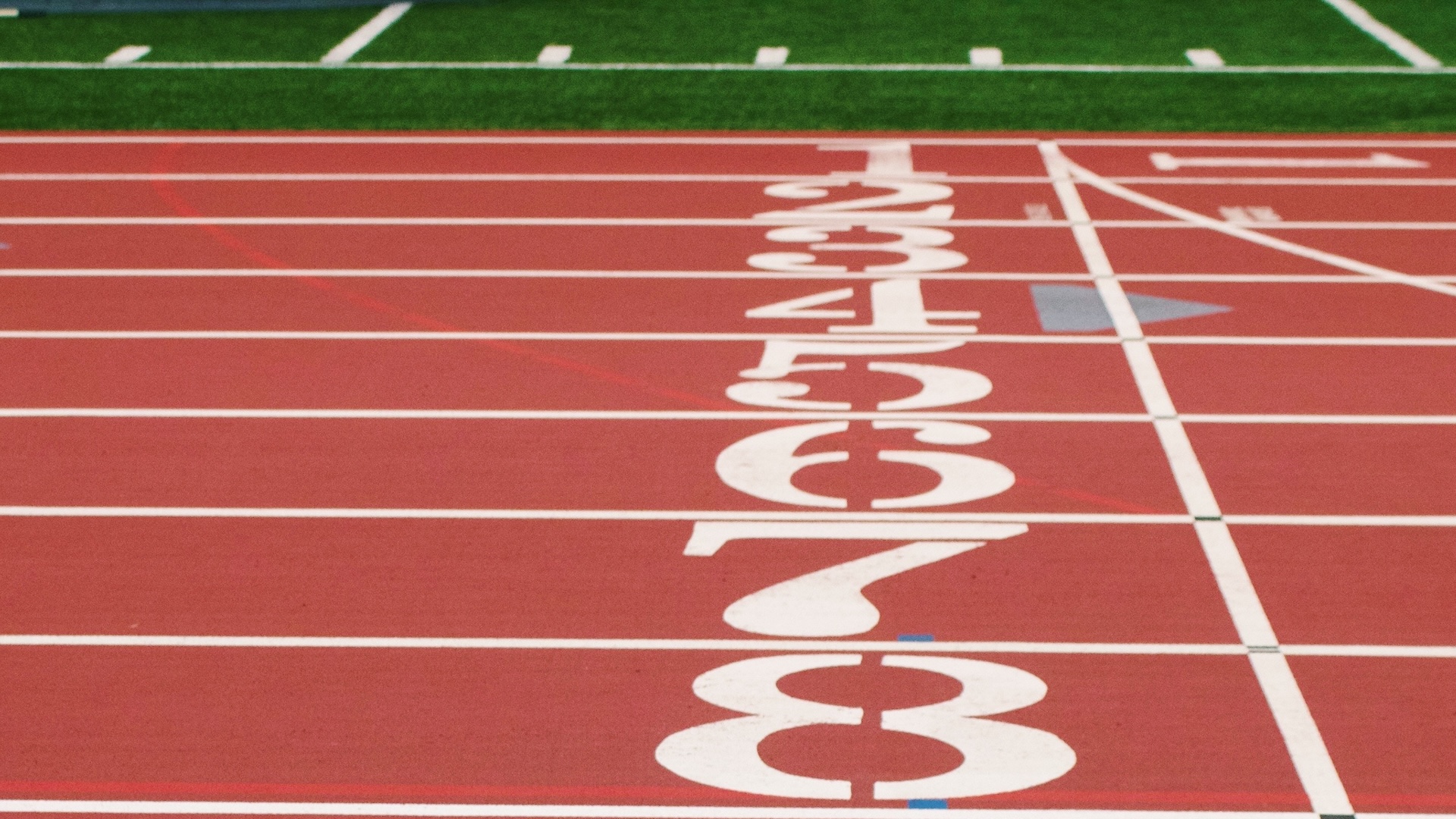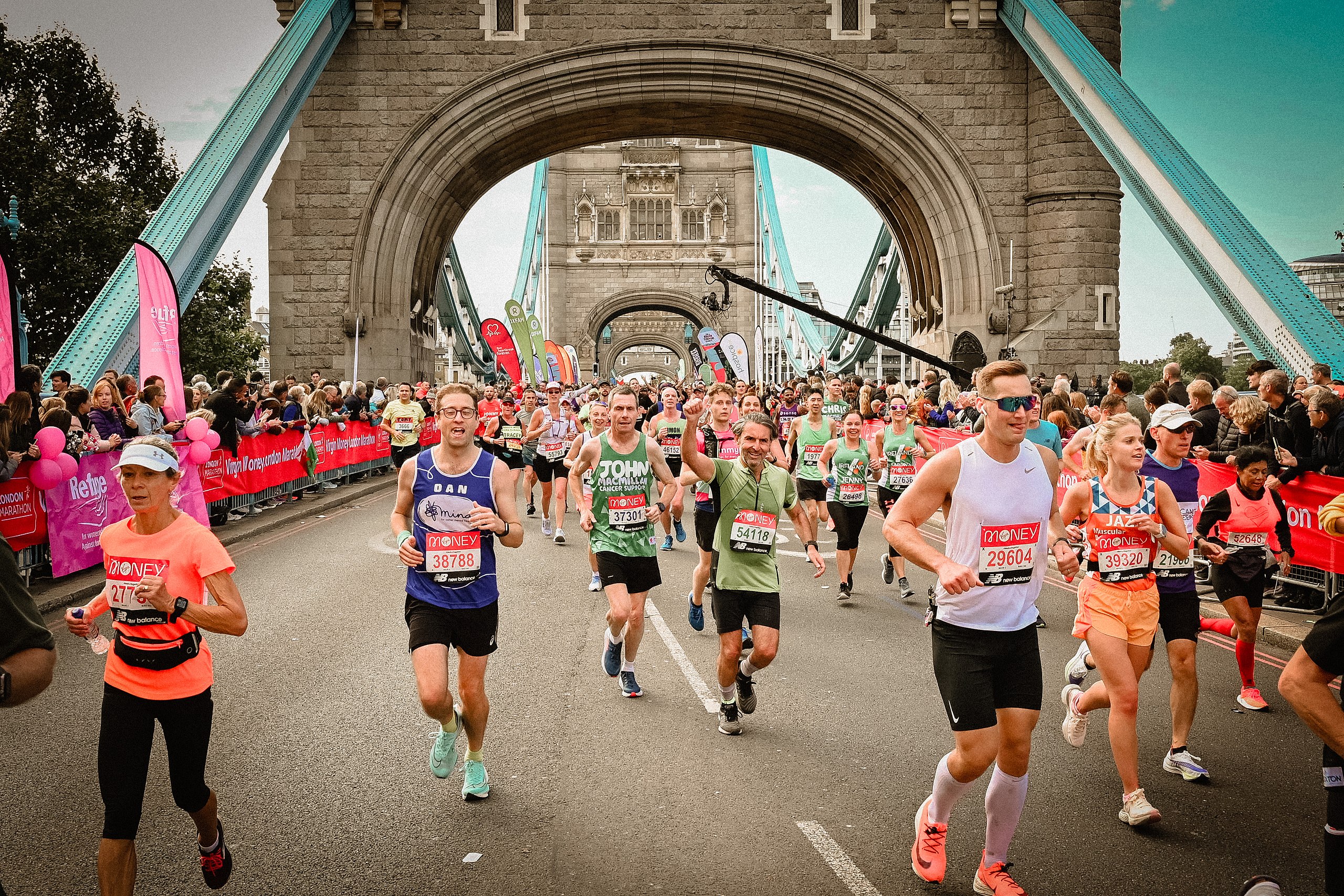Why You Should Run On The Track

Running tracks can feel daunting to new runners and they seem like something which only faster runners use, but that’s not true at all, and running tracks can work for all runners. Here’s everything you need to know about running on a track, and what we love about them.
FIRST OF ALL, WHAT IS A RUNNING TRACK?
Most outdoor running tracks are 400m around, which is measured from the inside lane, or lane one. It’s typical for tracks to have eight lanes, where a full lap in lane eight may be around 450m in length, which is why many track races have a staggered start.
The tracks have two ‘straights’, which are the long sections, and then the bends on either side.
Indoor tracks are often 200m around lane one.
Tracks are made of all-weather polyurethane or rubber material which makes them slightly softer and more responsive than concrete roads.
HOW DO I ACCESS A RUNNING TRACK?
There are two main ways.
First, you could join a local running club as many of these will regularly meet at a track for sessions. This can be a great introduction to the track and a great way to run with others. You should expect a wide range of abilities at these, and people often run their own sessions, so don’t worry about not being able to keep up with the faster runners.
Or, look up the opening times of a local track and see if they have open sessions that you can pay to use. You can then just go along and run on the track in your own time, and run your own workout.
You may even have a community track near you that you don’t need to pay to use. If so, lucky you!
WATCH OUT – IT LOOKS BIGGER THAN IT IS!
You see professional runners on TV lapping in sub-60 seconds and they make it look effortless. But the first time you stand on a running track you’ll assume that the one you’ve visited must be twice the size of a regular track because it looks massive! As you start running, and get to around halfway, you’ll be certain that this track is oversized. Why does it feel so long?!
Unfortunately, it’s almost certainly 400m long… After a few laps you’ll soon start to get a feel for what it’s like to run on the straights, and to run the bends. The more you do it, the more it can feel exciting to run around, especially as you cross the finish line on each rep (even if you’ll never actually run that sub-60 second 400m!)
IS THE TRACK EASIER ON YOUR LEGS?
The track surface has a nice responsive feel to it, meaning it can feel slightly softer and easier on your legs, in particular the ankle and knee joints.
Just watch out because some runners (especially if you aren’t used to the track) can find that faster track workouts make their calves and achilles a little sore the first few times they run there, plus it can be tempting to try and run faster and harder than you usually would on the road. Just be controlled on your first few times.
SO WHAT’S SO GOOD ABOUT RUNNING ON THE TRACK?
It’s flat so you don’t need to worry about hills. You also don’t need to think about cars or directions, meaning you can fully focus on running.
It’s exactly 400m so it’s easy to know how far you’ve run. Two-and-a-half laps gets you to one kilometre, and four laps is one mile (well, it’s 9m short, but close enough).
It’s great for helping you run faster, and running faster is great for helping to improve your strength, fitness and your running form.
When there are other runners at the track they can also help you to run faster. There’s nothing like chasing down the person in front of you, or knowing that someone is coming up behind you, to make you run faster!
But if you don’t want to run fast, then you don’t need to. You can still do your easy runs on a track as long as you don’t mind running around in circles – just make sure you stick to the outside lanes.
Running lap after lap on a track can be boring to some runners, but to others it’s a great way to learn to feel certain paces, and to deal with the mental toughness that can come when racing longer distances – if you can run 10km on a track, you can run it on the road.
Running on a track is something that most recreational runners only see professionals do on TV at big competitions like the Olympic Games, so to step onto a track and try to run some fast laps makes it feel special.
OK, YOU CONVINCED ME! DO I NEED TRACK SPIKES?
No, you don’t! Regular running shoes are absolutely fine. You’ll only (maybe) want spikes if you start to take part in races on the track, and even then tempo or carbon plate shoes are usually fine.
FINALLY, DO I NEED TO KNOW ANY TRACK ETIQUETTE?
Yes, you do!
- Run your faster efforts anti-clockwise in the inside lane
- You can run warm ups and cool downs in the outside lanes and can run in either direction, just be aware of other track users
- If you are a slower runner then don’t worry. The correct way to run on a track is for faster runners to pass on the right of other runners. They can call out ‘track’ or ‘on your right’ to let them know they’re passing. If you try and move over to let them pass inside of you, then you might end up getting in their way
- The exception to the last tip is if there are some very fast runners on the track. In this case consider running all of your intervals in the middle lanes of the track to allow them full use of the inside lanes
- When finishing an interval, move to the outside lanes to rest, walk or jog, and don’t linger in lane one. Also don’t stop abruptly in lane one at the end of a rep and be aware of other runners
- Avoid wearing headphones as you want to be able to hear what’s going on around you on the track
- You can leave a water bottle or small items on the inside of the track, but be cautious every time you come onto or off of the track
Do you like running on a track? If you’ve never run on a track before, then what do you feel is stopping you?


























Running News
Ingebrigtsen Stars at World Athletics Indoor Championships 2025 – Plus All The Winners!
Sam Ruthe Is First 15-Year-Old To Run A Four-Minute Mile!
Eliud Kipchoge Will Run The 2025 Sydney Marathon!